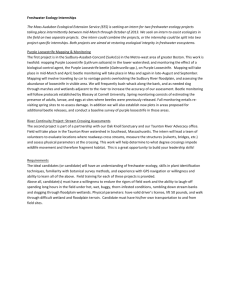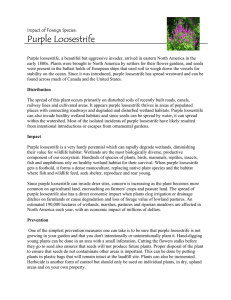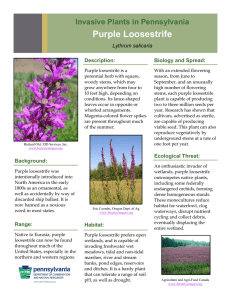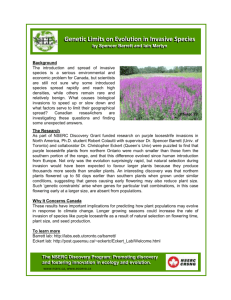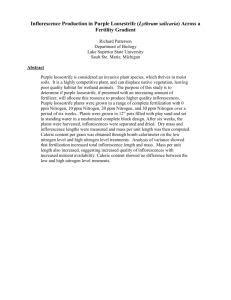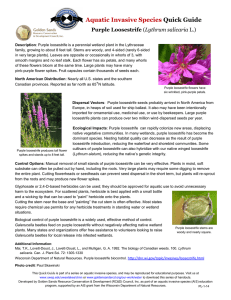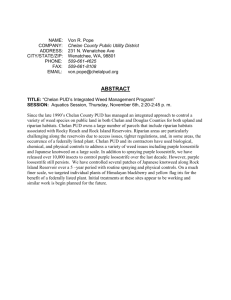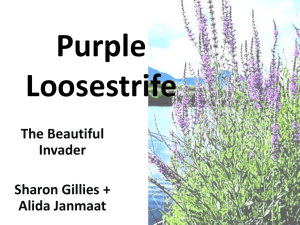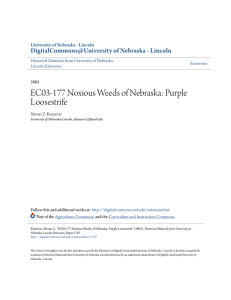Purple Loosestrife Weed of the Week
advertisement
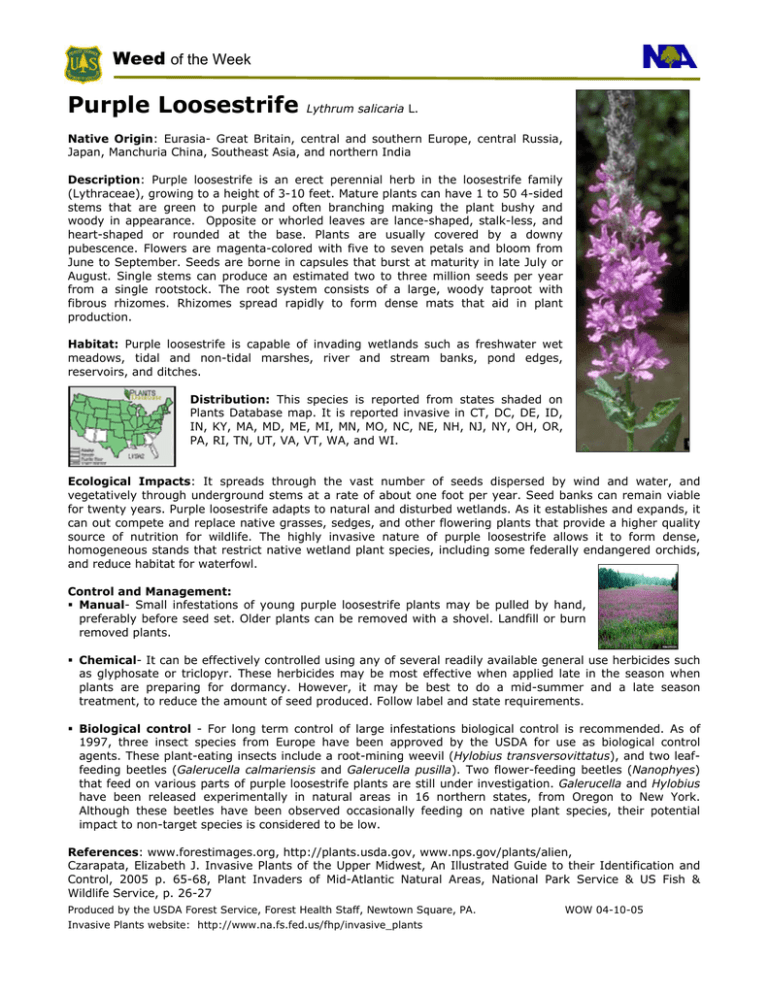
Weed of the Week Purple Loosestrife Lythrum salicaria L. Native Origin: Eurasia- Great Britain, central and southern Europe, central Russia, Japan, Manchuria China, Southeast Asia, and northern India Description: Purple loosestrife is an erect perennial herb in the loosestrife family (Lythraceae), growing to a height of 3-10 feet. Mature plants can have 1 to 50 4-sided stems that are green to purple and often branching making the plant bushy and woody in appearance. Opposite or whorled leaves are lance-shaped, stalk-less, and heart-shaped or rounded at the base. Plants are usually covered by a downy pubescence. Flowers are magenta-colored with five to seven petals and bloom from June to September. Seeds are borne in capsules that burst at maturity in late July or August. Single stems can produce an estimated two to three million seeds per year from a single rootstock. The root system consists of a large, woody taproot with fibrous rhizomes. Rhizomes spread rapidly to form dense mats that aid in plant production. Habitat: Purple loosestrife is capable of invading wetlands such as freshwater wet meadows, tidal and non-tidal marshes, river and stream banks, pond edges, reservoirs, and ditches. Distribution: This species is reported from states shaded on Plants Database map. It is reported invasive in CT, DC, DE, ID, IN, KY, MA, MD, ME, MI, MN, MO, NC, NE, NH, NJ, NY, OH, OR, PA, RI, TN, UT, VA, VT, WA, and WI. Ecological Impacts: It spreads through the vast number of seeds dispersed by wind and water, and vegetatively through underground stems at a rate of about one foot per year. Seed banks can remain viable for twenty years. Purple loosestrife adapts to natural and disturbed wetlands. As it establishes and expands, it can out compete and replace native grasses, sedges, and other flowering plants that provide a higher quality source of nutrition for wildlife. The highly invasive nature of purple loosestrife allows it to form dense, homogeneous stands that restrict native wetland plant species, including some federally endangered orchids, and reduce habitat for waterfowl. Control and Management: Manual- Small infestations of young purple loosestrife plants may be pulled by hand, preferably before seed set. Older plants can be removed with a shovel. Landfill or burn removed plants. Chemical- It can be effectively controlled using any of several readily available general use herbicides such as glyphosate or triclopyr. These herbicides may be most effective when applied late in the season when plants are preparing for dormancy. However, it may be best to do a mid-summer and a late season treatment, to reduce the amount of seed produced. Follow label and state requirements. Biological control - For long term control of large infestations biological control is recommended. As of 1997, three insect species from Europe have been approved by the USDA for use as biological control agents. These plant-eating insects include a root-mining weevil (Hylobius transversovittatus), and two leaffeeding beetles (Galerucella calmariensis and Galerucella pusilla). Two flower-feeding beetles (Nanophyes) that feed on various parts of purple loosestrife plants are still under investigation. Galerucella and Hylobius have been released experimentally in natural areas in 16 northern states, from Oregon to New York. Although these beetles have been observed occasionally feeding on native plant species, their potential impact to non-target species is considered to be low. References: www.forestimages.org, http://plants.usda.gov, www.nps.gov/plants/alien, Czarapata, Elizabeth J. Invasive Plants of the Upper Midwest, An Illustrated Guide to their Identification and Control, 2005 p. 65-68, Plant Invaders of Mid-Atlantic Natural Areas, National Park Service & US Fish & Wildlife Service, p. 26-27 Produced by the USDA Forest Service, Forest Health Staff, Newtown Square, PA. Invasive Plants website: http://www.na.fs.fed.us/fhp/invasive_plants WOW 04-10-05
